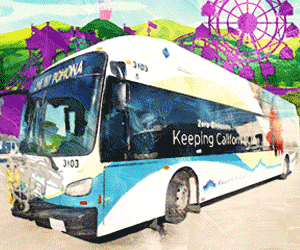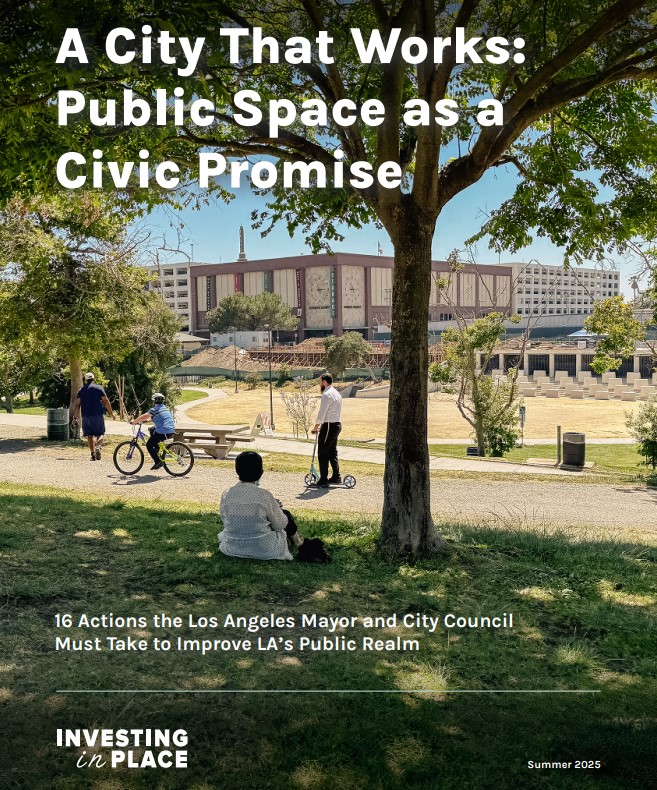Last week, the Metro board took some important steps toward getting construction underway on the planned West Santa Ana Branch rail project, which will serve communities in southeast Los Angeles County. Ultimately, the 19.3-mile light rail line will extend from Union Station through what are known as the Gateway Cities to a terminus in the city of Artesia, which nearly borders on Orange County.
The new line will serve the cities of Artesia, Cerritos, Bellflower, Paramount, Downey, South Gate, Cudahy, Bell, Huntington Park, and Vernon, plus the unincorporated L.A. County's Florence-Firestone, as well as downtown Los Angeles. The project benefits numerous low-income communities of color with greater population density and transit ridership levels than L.A. County as a whole.
The Metro board approved the alignment and planned phasing for the WSAB, and a motion (spearheaded by Boardmember Janice Hahn) aimed at facilitating completing the entire line.
There had been two potential downtown Los Angeles WSAB end points under consideration; the board-approved northern terminus of the WSAB line will be Union Station.
Though many in the communities served are pushing for the entire line to built as soon as possible, the project's cost and complexity pushed the agency to recommend building just the lower 14.8 miles as an initial phase. Per Metro's December estimates, the full line is anticipated to cost $8.6 billion, with the initial 14.8-mile segment accounting for $4.9 billion of that.
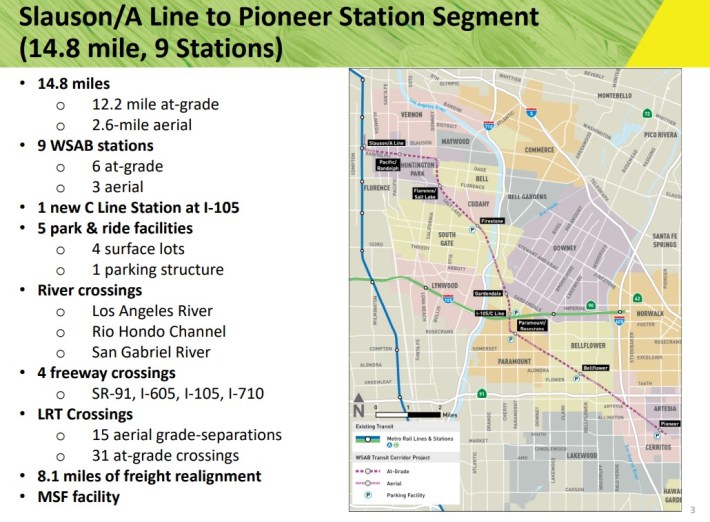
Though the rail line will mostly run at grade in existing rail rights-of-way, there are lots of costly components: aerial stretches, aerial stations, bridges crossing four freeways and three rivers, freight rail realignment, and more.
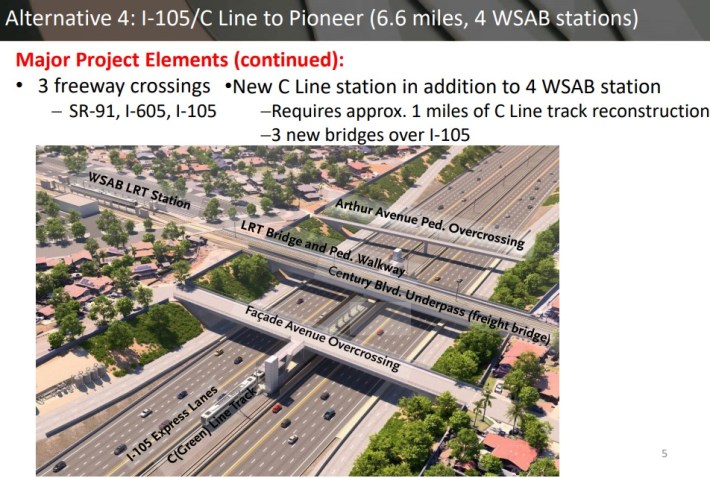
The WSAB rail line has about $2 billion worth of funding set aside in Metro's Measure M and R sales tax expenditure plans. It also has another $850 million in state funding, plus a few other smaller funding sources [see Metro WSAB Funding Plan spreadsheet]. For the rest of the WSAB budget, Metro anticipates federal funding, most likely the Federal Transit Administration's New Starts monies - which are anticipated to be flush due to the recently approved federal infrastructure bill.
At last week's meeting, several speakers noted that WSAB should be especially competitive for federal funding under President Joe Biden's Justice40 Initiative. Under Biden's directive, the federal government's goal is "delivering 40 percent of the overall benefits of relevant federal investments to disadvantaged communities." In Southern California, and indeed across the country, there are few projects more closely aligned with the Justice40 than WSAB.
In addition to securing remaining funds, there are several steps before WSAB construction can proceed.
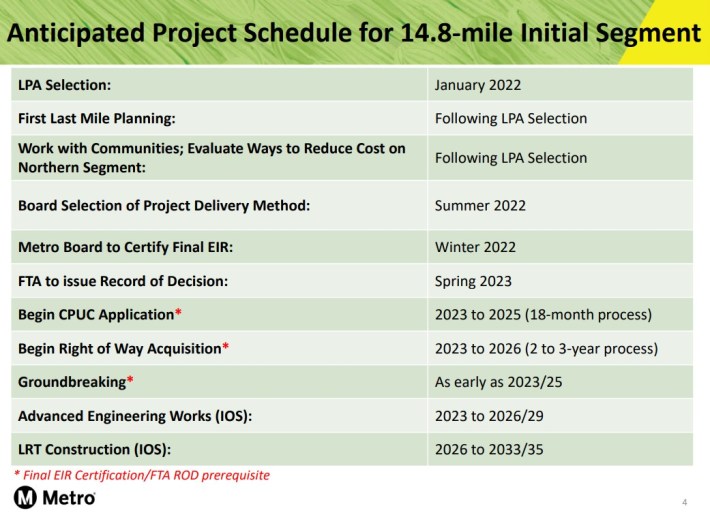
Metro anticipates approving the WSAB environmental studies later this year, and working with state and federal agencies for remaining approvals. A project groundbreaking could potentially take place in 2023, but full construction activity is not expected to get underway until 2026.



